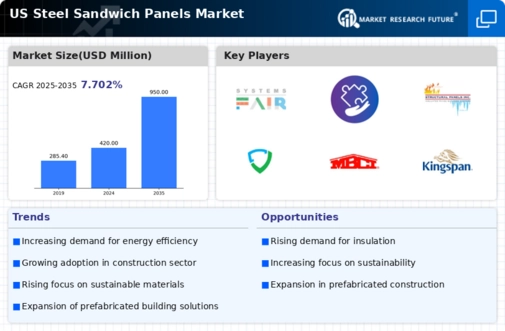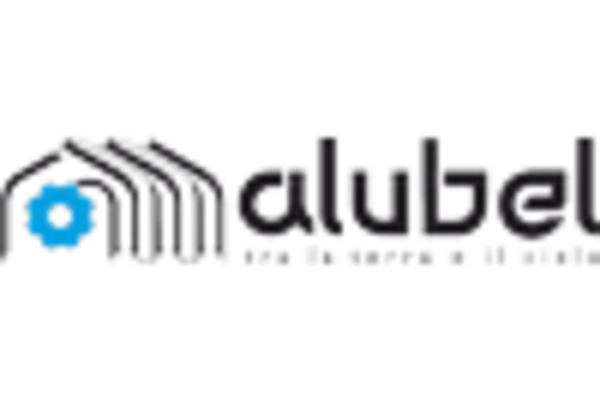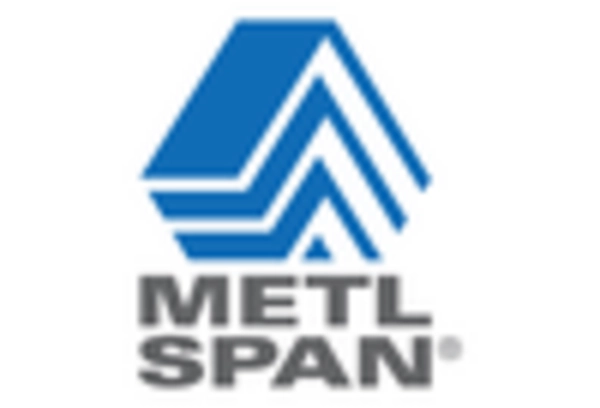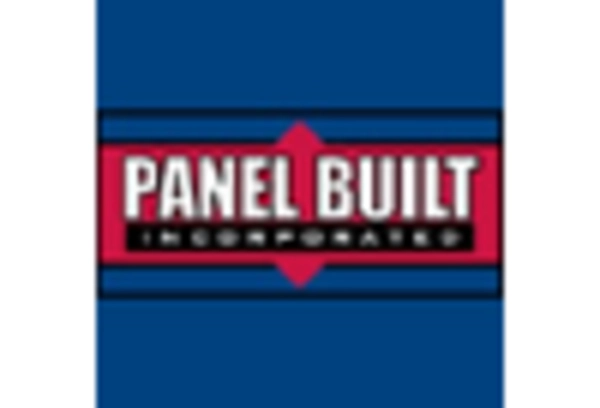Shifts in Consumer Preferences
The steel sandwich-panels market is increasingly influenced by shifts in consumer preferences towards modern and aesthetically pleasing building designs. As homeowners and businesses prioritize visual appeal alongside functionality, the demand for versatile building materials that can accommodate various architectural styles is on the rise. Steel sandwich panels offer a range of finishes and colors, making them an attractive option for contemporary construction projects. Additionally, the growing trend of open-concept spaces in residential and commercial buildings necessitates the use of materials that provide both structural integrity and design flexibility. This evolving consumer mindset is likely to drive the steel sandwich-panels market as manufacturers respond with innovative designs that cater to aesthetic preferences while maintaining performance standards. As the market adapts to these changes, it may witness an increase in demand for customized solutions that align with individual tastes.
Increased Infrastructure Investment
The steel sandwich-panels market is poised to benefit from the substantial investments being made in infrastructure across the United States. With government initiatives aimed at revitalizing aging infrastructure, there is a surge in demand for durable and efficient building materials. Steel sandwich panels, known for their strength and longevity, are increasingly being utilized in various infrastructure projects, including schools, hospitals, and transportation facilities. Recent reports indicate that infrastructure spending is expected to reach $1 trillion by 2027, creating a favorable environment for the steel sandwich-panels market. This influx of investment not only supports the construction of new facilities but also encourages the renovation of existing structures, thereby expanding the market's potential. As infrastructure projects ramp up, the demand for steel sandwich panels is likely to rise, reinforcing their position in the construction industry.
Rising Demand for Energy Efficiency
The steel sandwich-panels market is experiencing a notable increase in demand driven by the growing emphasis on energy efficiency in construction. As building codes evolve, there is a heightened requirement for materials that provide superior insulation and reduce energy consumption. Steel sandwich panels, known for their excellent thermal performance, are increasingly favored in both commercial and residential projects. In fact, the energy efficiency of these panels can lead to reductions in heating and cooling costs by up to 30%. This trend is further supported by the construction industry's shift towards sustainable practices, which aligns with the objectives of the steel sandwich-panels market. As energy costs continue to rise, the market is likely to see sustained growth as builders and developers seek to meet both regulatory standards and consumer expectations for energy-efficient solutions.
Growth in Prefabricated Construction
The steel sandwich-panels market is significantly influenced by the rising trend of prefabricated construction methods. Prefabrication allows for faster construction timelines and reduced labor costs, making it an attractive option for developers. Steel sandwich panels are particularly well-suited for this approach due to their lightweight nature and ease of installation. The market for prefabricated buildings is projected to grow at a CAGR of approximately 6% over the next few years, which bodes well for the steel sandwich-panels market. As more construction projects adopt prefabrication techniques, the demand for these panels is expected to increase, providing a competitive edge in the construction sector. This shift not only enhances efficiency but also aligns with the growing preference for modular building solutions, further propelling the steel sandwich-panels market.
Technological Innovations in Manufacturing
The steel sandwich-panels market is being transformed by ongoing technological innovations in manufacturing processes. Advances in production techniques, such as automated fabrication and improved bonding methods, enhance the quality and performance of steel sandwich panels. These innovations not only increase production efficiency but also reduce waste, aligning with the sustainability goals of the construction industry. Furthermore, the integration of smart technologies into panel design allows for enhanced functionality, such as improved thermal insulation and fire resistance. As manufacturers continue to invest in research and development, the steel sandwich-panels market is expected to see a rise in product offerings that meet the evolving needs of builders and architects. This focus on innovation is likely to drive market growth as stakeholders seek high-performance materials that can adapt to modern construction demands.

















Leave a Comment